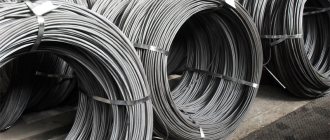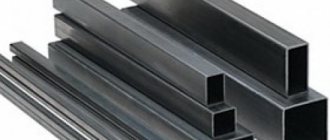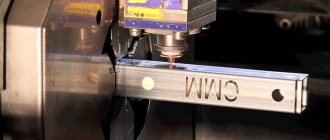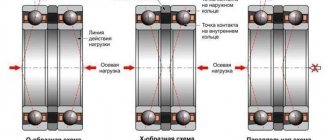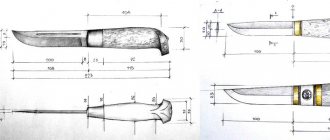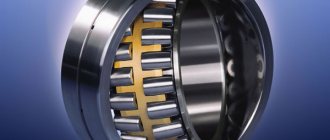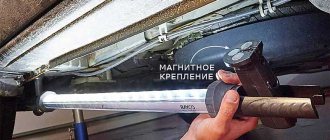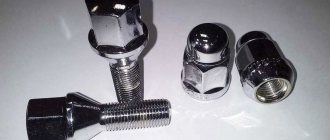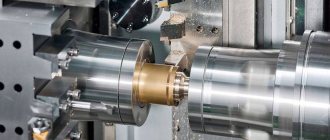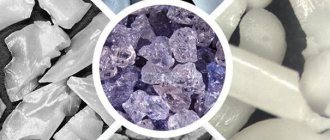Attachments: from 840,000 rubles
Payback: from 1 year
The number of passenger cars in Russia has exceeded 40 million. This entire huge fleet of vehicles requires regular repairs and replacement of parts and body parts. One of the most vulnerable and often requires replacement is the bumper, because it takes the lion's share of impacts even in minor collisions. Let's look at the bumper business.
Business concept
Demand for custom bumpers is consistently high, driven by several factors. Firstly, not all car owners can afford an original part from the manufacturer due to its high cost. Secondly, according to statistics, the share of foreign cars in the passenger car market is approximately 60 percent. Moreover, more than 30 percent of them are over fifteen years old. Many of the models have already been discontinued, and getting an original bumper for them is either unrealistic or very difficult. And thirdly, the reason for replacing a bumper is not always due to its damage; owners often tune the car by replacing the original part with a new one that matches their aesthetic ideas.
Production technology
The bumper manufacturing technology is quite simple, and if you have skills in working with 3D graphics, the entire process can be carried out by one person. First, based on the client’s wishes, a bumper layout is created using specialized computer programs. Then the layout is agreed upon and adjusted if necessary. The next step is to create a matrix for the future product, which is then inserted into a molding machine and, under pressure, a bumper of the desired shape is bent from plastic. The final stage is painting the product in the desired color (it is very difficult to ideally choose a color to match the car; an alternative is painting it in a contrasting color).
Materials
Today in the automotive industry, bumpers are made from several types of plastic:
- Thermoplastic plastics (polyethylene, polypropylene). These materials differ in that when heated they turn into a fluid state, and when cooled they turn into a solid state. This property allows plastics to be given the desired shape many times.
- Thermosetting plastics (polyurethane, fiberglass). A distinctive feature of such plastics is their polymerization, after which they cannot return to a viscous flow state. This imposes restrictions on the processing of bumpers made of these materials.
You will have to spend at least 3,500 thousand dollars on the purchase of materials.
What will be required for implementation?
First you need to rent a room. In principle, you can get by with your own garage, if you have one. Ideally, the room should be at least 50 square meters (after all, you still need to store a supply of raw materials there) and be located not far from a service station, car market or tire shop. Next, you buy a molding machine, raw materials (the most common material for making bumpers is plastic), a supply of paints and varnish. Although a private individual can sell bumpers, serious sales volumes can only be achieved by cooperating with car dealerships and service stations, which means you will need to register an individual entrepreneur. No permits or licenses are required for production. The staff will require one or two workers, if necessary a designer to work with 3D graphics and an accountant.
In order to attract customers, it is advisable to conduct an advertising campaign by posting information on automobile forums in your locality; placing advertisements and/or distributing leaflets near service stations or car markets can also be a good help.
Staff
A small workshop for the production of car bumpers does not need to hire many people. But if you organize the business correctly, you will need to hire two or three craftsmen to produce custom bumpers. The experience and professionalism of the people hired is important here. The flow of clients and the development of the organization depend on their results.
Also, to organize a business, you will need an administrator who will negotiate with clients and monitor the execution of orders. You will also need an accountant to keep records. Employees will have to allocate almost $3,000 for wages.
Bumper production
Financial calculations
Start-up capital
| Renting premises | 20,000 rubles |
| Purchase of necessary equipment | 400,000 rubles |
| Several bumper matrices for the most common cars (at the rate of one matrix – 100,000 rubles) | 300,000 rubles |
| Purchase of raw materials, varnishes and paints | 100,000 rubles |
| Advertising campaign | 20,000 rubles |
| Total | 840,000 rubles |
Monthly expenses
| Renting premises | 20,000 rubles |
| Purchase of raw materials (if necessary, the price is given for 1 ton.) | 85,000 rubles |
| Salary to employees | 50,000 rubles |
| Electricity charges, minor expenses | 5,000 rubles |
| Total | 160,000 rubles |
How much can you earn?
It is very difficult to accurately calculate income, and therefore net profit, from the production of bumpers, since there are too many variables when determining the commercial price for one bumper. To imagine the order of the numbers, you have to rely on the experience of similar startups. It is quite possible to achieve a net profit of 100,000 rubles.
Payback period
If we take the figure of 100,000 rubles of net profit as a guide, the business will pay for itself in less than a year. However, it is better to play it safe and, when planning business development, expect to “recoup” the investment within a period of up to one and a half years.
Renting premises
To open a bumper manufacturing business, you need investment capital of approximately 700,000 rubles. At the initial stage, a businessman must study the offers on the market of similar companies, identify shortcomings and find out which cars are in great demand among car owners.
In addition, you need to register your business. To do this, contact the tax office at your place of residence with all the necessary documents.
At the very beginning of organizing a bumper manufacturing business, you need to decide on the choice of premises. There are several options to solve this problem:
- The property already has a large garage. The best option to keep additional costs to a minimum. All you need to do is install the equipment and you can start working.
- Rent a garage or box. In this case, you will have to pay approximately 30,000 rubles.
- Shared rental. This idea can be used if there is a car repair shop in the area. Business in this case can be profitable, since rental costs will be divided in half.
In addition, the size of the rental premises must allow the storage of raw materials and finished products.
Risks
The main external factor that can negatively affect the bumper business is the reduction in the price of original components. In this case, to maintain demand, you will have to proportionally reduce the price of your products, which may be unacceptable from a commercial point of view.
The production of bumpers is a business that does not require large investments and allows you to get by with a minimum of assistants at the initial stage. Provided the product is of high quality, there will always be demand for it. A promising direction for business development is to establish relationships with various tuning salons with subsequent expansion of the assortment to include other decorative elements.
EQUIPMENT FOR MANUFACTURING BUMPERS AND OTHER CAR PARTS MANUFACTURING PRESS MOLDS FOR CAR BUMPERS JONWAI injection molding machines are designed for processing a wide range of polymer materials, including materials used in the manufacture of parts for the automotive industry. Jonwai has extensive experience in supplying complete sets of equipment, including injection molding machines and molds, to leading automotive companies such as Toyota, Honda, Fiat, WV, etc.
List of molds for bumpers and other car parts manufactured by our company:
- HYUNDAI ACCENT front bumper
- HYUNDAI STAREX front bumper
- PEUGEOT PARTNER 2002 front bumper
- PEUGEOT 307 front bumper
- AR-2
- FORD TRANSIT front bumper
- FORD ESCORT front bumper
- HYUNDAI 100 front bumper
- PEUGEOT PARTNER 96 front bumper
- MERCEDES 124 front bumper
- DACIA-LOGAN front bumper
- FORD MONDEO front bumper
- PUNTO 5 DOOR front bumper
- FIAT TEMPRA front bumper
- PEUGEOT 206 front bumper
- FIAT DOBLO front bumper
- REAULT MEGANE front bumper
- VAZ 2107 Front bumper
- Gazelle - fan casing, protective casing.
Milling machining centers
Portal milling 5-axis processing class=”aligncenter” width=”6000″ height=”4004″[/img] Two-axis rotary head of our own design
Head rotation angle 740 degrees, spindle angle 220 degrees
High-quality installation of electrical equipment
The Russian-made CNC system is completely in Russian
Molds for casting car parts
More detailed information inside blocks.
Application
Car tuning is becoming increasingly popular, so the production of plastic parts for cars is a profitable area of business development.
Fiberglass body kits are more of an artisanal method; you can create any shape you want for bumpers, spoilers or handles, but it is impossible to produce products even in small series - this is a one-off production.
If serious volumes of production are planned, then it is reasonable to purchase or make molds for car parts, and cast finished products from ABS plastic.
This type of polymer raw material is superior in quality to other types of plastics - it is light in weight and high strength, and can be restored after an impact, unlike fiberglass. Car bumpers in megacities such as Moscow often turn into consumables, so the increased strength of plastic is beneficial to the car owner.
Features of production technology
Molds for auto parts must be made of high-strength steel; the number of cycles that the mold can withstand without the formation of flash on the surface of the finished product depends on its characteristics. Because high hardness steel is more difficult to machine, it increases the cost of the mold.
If you plan to produce body parts in small batches, PFs can be made of aluminum alloys, but they are designed for a shorter service life than steel ones. They also require a higher production standard and can be damaged during the setup stage.
When creating a tooling model, it is desirable to reduce the cost of the injection mold for car parts. This is achieved by reducing its weight and using specialized software that simulates casting processes.
Specifics of using molds for the automotive industry
Any geometric deviations in the finished product turn into cracks and gaps on the car body, which are visible to the naked eye. Therefore, the production of molds for the automotive industry places high demands on both the preparation of 3D models of the product and equipment, and on the capabilities of the enterprise where the PF will be manufactured.
It is important to correctly predict production volumes in order to obtain the optimal cost of equipment, which largely depends on the selected metal.
Disadvantages of this type of equipment:
- It is necessary to use high-strength steel, since ABS plastic quickly wears out the working surfaces of the mold for making a bumper.
- Requirements for processing equipment and tools are growing, because... the surface of the finished bumper should not have the slightest defect.
- Aluminum equipment requires qualified personnel, can be quickly damaged if used incorrectly, and also has a significantly shorter service life.
Advantages of automotive parts molds:
- Production of products of any geometric shape in large quantities, completely interchangeable.
- Stable percentage of output of products with acceptable quality.
- Durability of ABS plastic products.
Equipment with an increased molding field
Forming field 2500x4500mm
Gate for loading equipment
Advanced design for molding the largest possible workpiece size
Bumper manufacturing technology
First, a businessman must create a layout of the future bumper on paper, and then in a special graphics program. If an entrepreneur does not have the skills to work with 3D graphics, then he should hire a designer who will help him with this.
After developing the project for the future bumper, it needs to be agreed upon with the client. If the layout is approved, then you can safely bring the idea to life.
If necessary, adjustments are made to the project (in accordance with the wishes of the customer). The created sketches should be stored in an archive; they may be useful when working with other clients.
What documents are needed to open
A private person can also make and sell bumpers, but if you cooperate with individual entrepreneurs or legal entities, you will need to register as a business entity. The ideal option would be an individual entrepreneur. To register it, you won’t need to wait a lot of time, spend extra money, or collect a lot of documents.
Which taxation system to choose for the production of car bumpers
For this area of activity, the simplified tax system would be an ideal option. The simplified taxation system includes two methods of tax deduction: 1 – the entrepreneur pays a tax of 6% of the profit received; 2 – this provides for the payment of a tax in the amount of 15% of the difference between the profit received and the costs incurred.
Do I need permission to open?
Opening your own business producing bumpers does not require any permits or additional licenses. As mentioned above, this product can be manufactured and sold even without registering as an individual entrepreneur or legal entity.
Production technology
The production of bumpers includes several sequential cycles: • design; • preparation of the necessary documentation; • making a model of the future bumper; • matrix production (if one is available, the above points are not taken into account); • production of a finished bumper; • painting of the product; • drying the bumper after painting; • sale of the final product.

